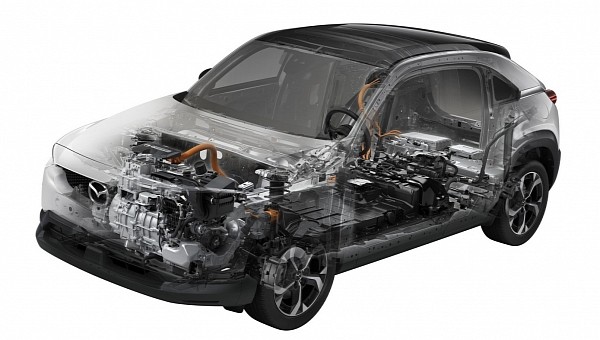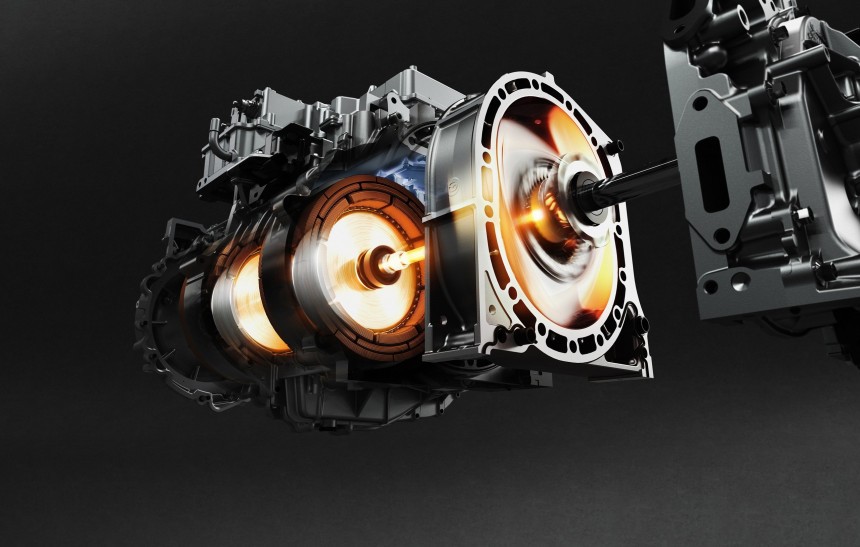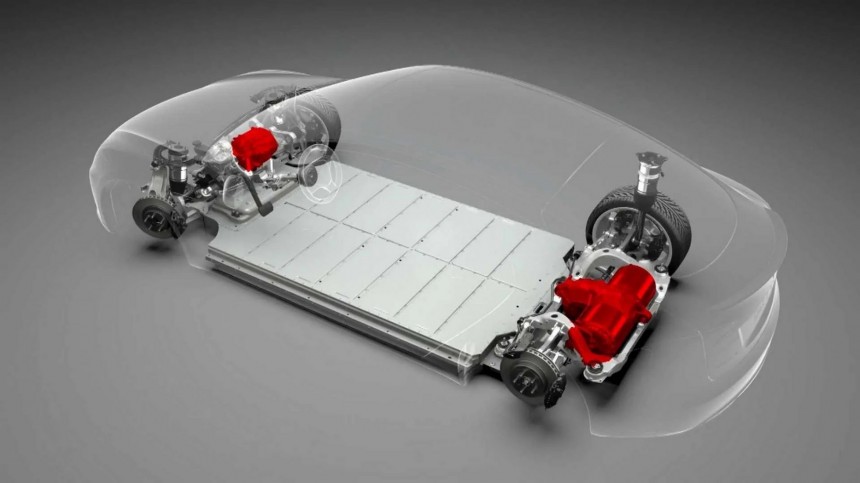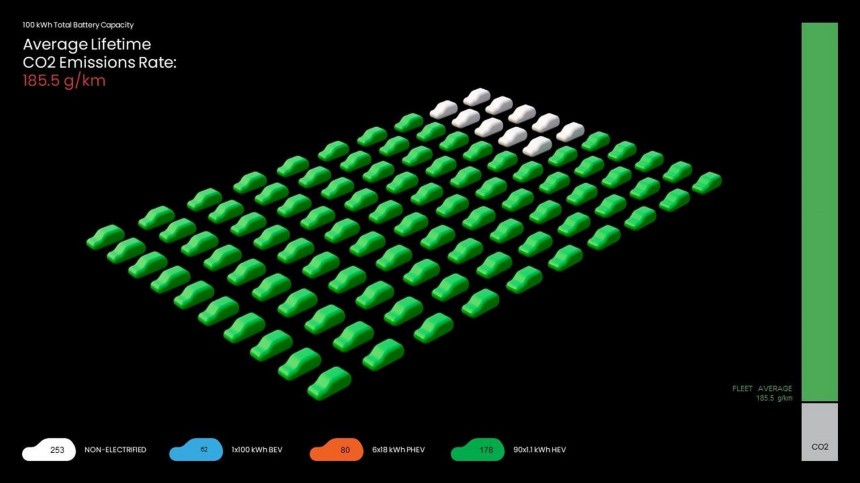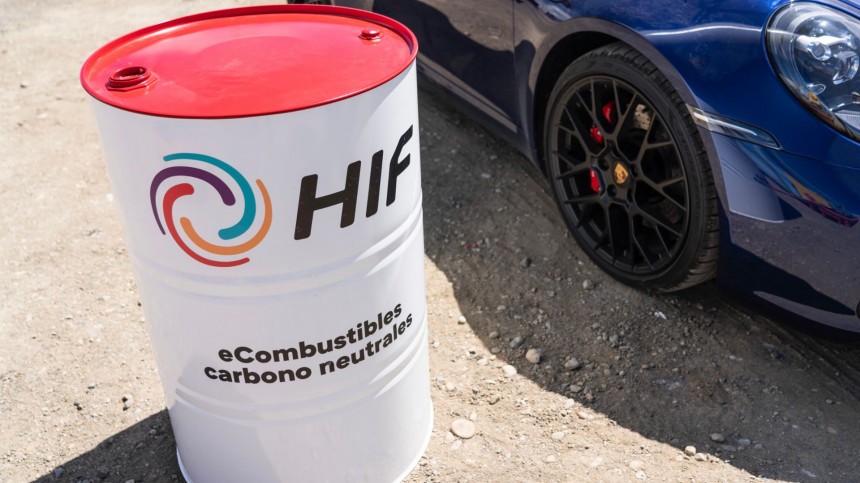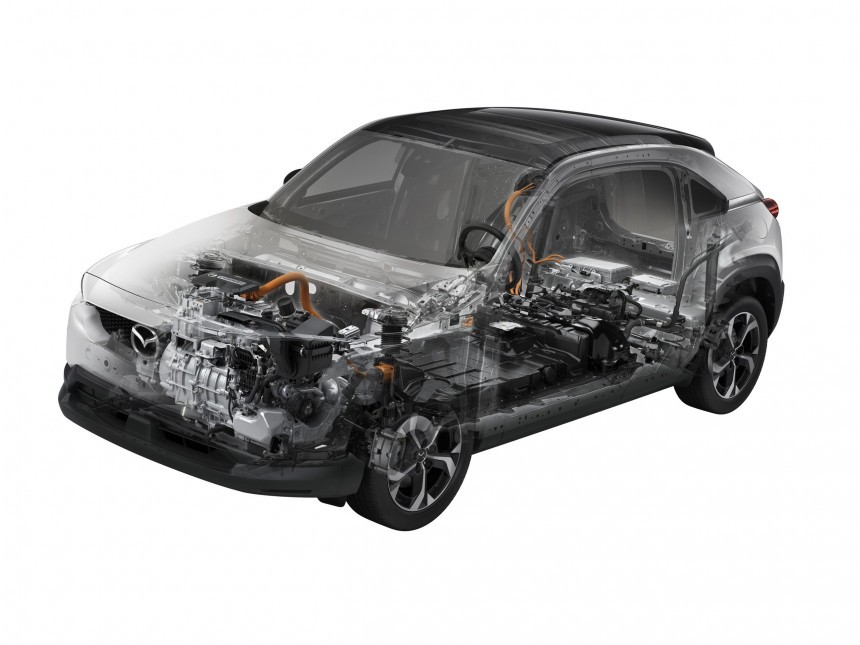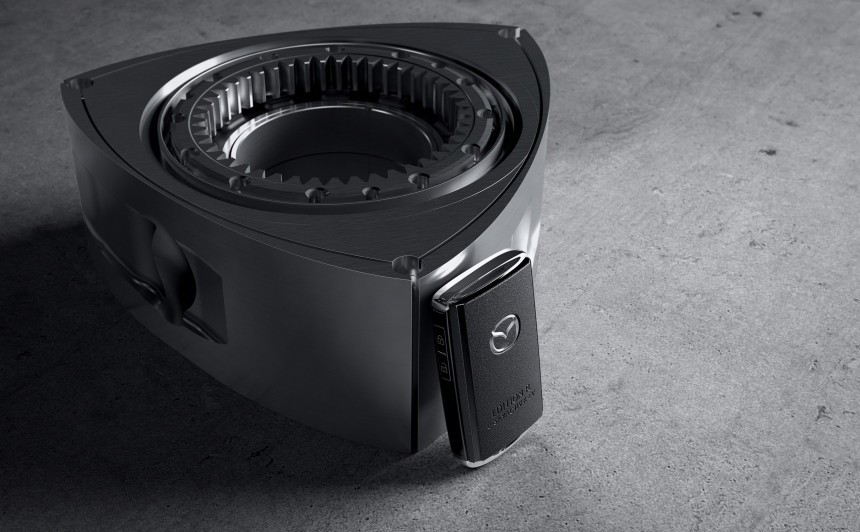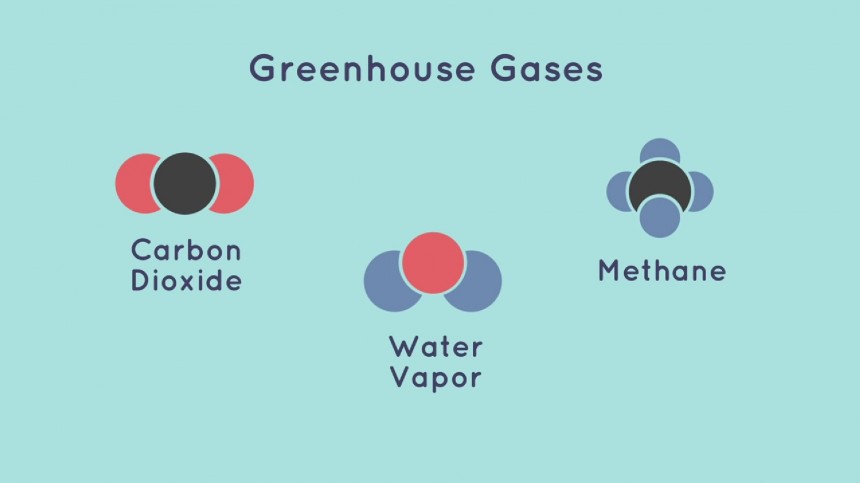On one side, you see tree-huggers tearing their clothes when anyone talks about allowing internal combustion engines to die a natural death instead of euthanizing them. On the other, nostalgic dinosaurs urge carmakers to keep V12 and Wankel engines powering wheels. None will get what they want if regulators get more sensible about the ban laws they are proposing, mainly because there is no way ICEs will keep the role they currently have.
Anyone celebrating what Germany and Italy have done to stop killing the combustion engine by 2035 in the European Union failed to realize why they did that. Sure, these two countries have several relevant automakers and sports car companies that live to provide high-performance vehicles. However, a ban would also kill hybrids and plug-in hybrids and have the exact opposite effect of what climate-change fighters want to achieve: such measures would increase carbon emissions instead of lowering them.
In 2035, people will still need cars. As much as public transportation may get better and reach all places, there will still be strikes stopping them (particularly in Europe), and other situations in which only a passenger car may help, such as going to the supermarket for the monthly shopping. Those defending you can do it all with a bicycle or on foot are either delusional or want you to live as they do – even if most people can’t.
By determining that new vehicles will not be allowed to emit carbon, governments will stimulate customers to buy whatever they can afford. EVs with large battery packs and reasonable ranges may still be as expensive as they are today. Affordable ones will probably have short ranges, which customers generally reject.
Those shopping for an affordable car will demand a vehicle that can take the kids to school and also go on a road trip with no concerns. Why would they spend a load of cash on something that may run only 200 miles (322 kilometers) or even less than that without having to stop for 20 minutes – possibly more – to fast charge? When you drive for long, especially with children, all you want is to reach your destination as fast as possible.
That will leave these car buyers restricted to used cars. Such vehicles will always present higher emission levels than new ones because they were homologated under older, more lenient rules. While regular inspections prove that they can still meet these requirements, they may be driven around. Governments may also forbid used cars for good, but politicians cannot afford to lose so many votes.
To make matters worse, battery electric vehicles (BEVs) are not the silver bullet their advocates proclaim they are. They have an Achilles’ heel that nobody is addressing as they should: battery pack replacements. In 2035, a brand-new EV sold today will be 12 years old. Its value will have dropped to a fraction of its current cost. Despite that, it will probably need a new battery pack, which may have the same value as the ones produced nowadays – and that is the best-case scenario.
Even if prices fall down, the high volume of cars that will need these components will make the demand for battery packs increase exponentially, keeping the cost as it currently is. In the worst-case scenario, prices will skyrocket. It will not make financial sense to give a used EV a new battery pack, even if that’s a fantastic idea from an environmental point of view. Used components will need to be replaced sooner. This is where regulators and EV advocates want to lead us without answering how we will keep old BEVs running. It is a trap, and we are walking pretty fast toward it.
With that in mind, what role do internal combustion engines and synthetic or renewable fuels have? They should work as power reserves, not as primary power sources. Keeping prices low until EVs find a way to be affordable is another strong possibility for them. How about maintaining vehicle mass low? Above all, they should help lower carbon emissions more than BEVs ever will, and that is not difficult to demonstrate.
Hybrids and plug-in hybrids use much smaller battery packs than BEVs. They should be made of LFP or chemistries that are even cheaper, such as sodium-ion or anything else that becomes viable and keeps costs down. These smaller components should be more affordable to replace and would still make vehicles with combustion engines emit less carbon, as Gill Pratt proved in an exercise at the World Economic Forum in Davos. Toyota’s chief scientist showed how it makes more sense to have several cars with smaller batteries than a single one with a massive component if the goal is to reduce carbon emissions.
Detractors of Pratt said his reasoning was wrong because he was working with the idea that the raw material supply for batteries was limited. They claim that all metal cells need should be easy to obtain, but it is not that simple. To reach the scale the automotive industry would need battery production to have, it is necessary to expand mining like we never did before. Opening a new mine can take decades because of all the environmental impacts this activity brings. Several communities close to potential mining areas do not want mines where they live. On top of that, governments all over the world are concerned about energy security, which means they want to mine and refine raw materials on their own.
If combustion engines are not forbidden, but emission regulations still get tighter, carmakers will necessarily have to make vehicles that have longer electric-only ranges. That has already made cheaper cars get rarer, with companies such as Ford giving up on the Fiesta and rumors that Volkswagen may kill the Polo. That seems irreversible unless synthetic and renewable fuels allow cheaper cars to be carbon neutral, but never simply by doing what they always have: burning fuel to power wheels.
Although oil prices are constantly getting higher, synthetic and renewable fuels are often more expensive to produce. Technology may evolve to make them cheaper and more abundant, but that is not something that should happen anytime soon. Apart from that, they contain less energy than gasoline, which makes you need more of these fuels to perform the same work or travel the same distances.
Summing up, alternative fuels will not ditch the need for more efficient cars, something that combustion engines cannot deliver without help. The idea still is to use the minimum possible synthetic or renewable fuels. As much as BEV advocates may rightfully claim these vehicles are the most efficient ones currently available, they are not a one-size-fits-all solution, primarily because of the financial and technical issues I have already mentioned here.
A recent trend may indicate the path to solve that. Instead of having combustion engines powering the wheels, they should be used solely to extend the electric range of their vehicles. In other words, they will only work when the battery charge is too low to power the vehicle. That means we’re talking about EVs with range extenders.
The Chevrolet Volt should have been the first such car, but General Motors decided to make the engine propel the vehicle in some situations, which turned it into a plug-in hybrid. The BMW i3 is probably the first production EV with an engine exclusively for generating electricity.
More recently, Mazda has turned its rotary engine into a generator on the MX-30. The problem is that it cut the battery pack capacity in half. While that should make the vehicle cheaper, it also diminished an already low electric range. The MX-30 EV has a range of 100 miles (161 kilometers). The crossover with the rotary engine travels 52.9 mi (85 km) with the power of its 17.8-kWh battery pack. Mazda has not disclosed how much further the 50 liters (13.2 gallons) of gasoline can extend that range. Although that was not the best execution for the idea, this should be the way to go for new vehicles with an engine.
Even those without large battery packs show the remaining combustion engines should not propel vehicles anymore. Nissan has taken that to extremes with the e-POWER system and its 2.1-kWh accumulator. The tiny engine in each car can always work at its optimal rotational speed. That helps it deliver amazing fuel consumption numbers on the Note: 65 MPG (3.6 l/100 km or 27.6 km/l). The Kicks and Qashqai present worse figures, which were predictable with crossovers involved. They have larger frontal areas, meaning their aerodynamics does not help.
If the goal is avoiding carbon emissions, small or even minimal battery packs make the cut with their low weight and lower cost. However, the main issue with combustion engines relates to hazardous gases to human health, such as ozone and nitrogen oxides. If EV advocates attacked this instead of carbon emissions, they would probably have a stronger argument to get rid of them.
Whether burning fossil, synthetic, or renewable fuels, combustion engines will still generate these hazardous gases and many more. In big cities, they worsen respiratory diseases and kill millions of people every year, which is why they should only work outside densely populated areas. Isn’t it ironic that people are more interested in avoiding climate change than they are in simply sparing people from pollution? Pretensely saving the planet is a better marketing argument than directly saving human lives.
As for synthetic fuels, combustion engines are not the only way we can use them. They could work as a clever way to store hydrogen. In its gaseous form, it is extremely difficult to keep, demanding high-pressure tanks. If it were converted into synthetic fuel, a reformer could deliver hydrogen to a fuel cell and release carbon that was already extracted from the atmosphere. That would keep the greenhouse effect at stable levels, eliminating climate change.
This could also turn other transportation means, such as airplanes, buses, trucks, and ships, into carbon-neutral solutions. With fuel cells and synthetic fuels, they could eliminate combustion engines naturally and in an environmentally-responsible way. Again, this is not about efficiency as much as it is about convenience – technical or personal. Allow me to elaborate on that.
Efficiency is fantastic. It is what will prevent us from making fuel using energy just to burn it in combustion engines as we always did. At the same time, pursuing efficiency alone would force us to restrict access to vehicles, allowing only people with enough money to buy EVs to drive. These EVs would be much heavier than most current cars, which represents a safety hazard to other road users. They would require mining, which is not welcome in most places. In other words, pursuing efficiency alone will not make the cut when you have much more urgent issues to solve, such as additional carbon emissions to the atmosphere. As some people say, the enemy is fossil fuels, not combustion engines per se.
The scenario we have is comprised of battery packs that cost a fortune, are incredibly heavy, and do not last a million miles. Fuel cells could extend the range if there were a hydrogen distribution network in place. While those technologies mature, combustion engines may help keep cars affordable and sensible. Those attacking it just for the sake of saving the planet probably just want to get rid of cars altogether.
In 2035, people will still need cars. As much as public transportation may get better and reach all places, there will still be strikes stopping them (particularly in Europe), and other situations in which only a passenger car may help, such as going to the supermarket for the monthly shopping. Those defending you can do it all with a bicycle or on foot are either delusional or want you to live as they do – even if most people can’t.
Those shopping for an affordable car will demand a vehicle that can take the kids to school and also go on a road trip with no concerns. Why would they spend a load of cash on something that may run only 200 miles (322 kilometers) or even less than that without having to stop for 20 minutes – possibly more – to fast charge? When you drive for long, especially with children, all you want is to reach your destination as fast as possible.
That will leave these car buyers restricted to used cars. Such vehicles will always present higher emission levels than new ones because they were homologated under older, more lenient rules. While regular inspections prove that they can still meet these requirements, they may be driven around. Governments may also forbid used cars for good, but politicians cannot afford to lose so many votes.
Even if prices fall down, the high volume of cars that will need these components will make the demand for battery packs increase exponentially, keeping the cost as it currently is. In the worst-case scenario, prices will skyrocket. It will not make financial sense to give a used EV a new battery pack, even if that’s a fantastic idea from an environmental point of view. Used components will need to be replaced sooner. This is where regulators and EV advocates want to lead us without answering how we will keep old BEVs running. It is a trap, and we are walking pretty fast toward it.
Hybrids and plug-in hybrids use much smaller battery packs than BEVs. They should be made of LFP or chemistries that are even cheaper, such as sodium-ion or anything else that becomes viable and keeps costs down. These smaller components should be more affordable to replace and would still make vehicles with combustion engines emit less carbon, as Gill Pratt proved in an exercise at the World Economic Forum in Davos. Toyota’s chief scientist showed how it makes more sense to have several cars with smaller batteries than a single one with a massive component if the goal is to reduce carbon emissions.
If combustion engines are not forbidden, but emission regulations still get tighter, carmakers will necessarily have to make vehicles that have longer electric-only ranges. That has already made cheaper cars get rarer, with companies such as Ford giving up on the Fiesta and rumors that Volkswagen may kill the Polo. That seems irreversible unless synthetic and renewable fuels allow cheaper cars to be carbon neutral, but never simply by doing what they always have: burning fuel to power wheels.
Summing up, alternative fuels will not ditch the need for more efficient cars, something that combustion engines cannot deliver without help. The idea still is to use the minimum possible synthetic or renewable fuels. As much as BEV advocates may rightfully claim these vehicles are the most efficient ones currently available, they are not a one-size-fits-all solution, primarily because of the financial and technical issues I have already mentioned here.
The Chevrolet Volt should have been the first such car, but General Motors decided to make the engine propel the vehicle in some situations, which turned it into a plug-in hybrid. The BMW i3 is probably the first production EV with an engine exclusively for generating electricity.
More recently, Mazda has turned its rotary engine into a generator on the MX-30. The problem is that it cut the battery pack capacity in half. While that should make the vehicle cheaper, it also diminished an already low electric range. The MX-30 EV has a range of 100 miles (161 kilometers). The crossover with the rotary engine travels 52.9 mi (85 km) with the power of its 17.8-kWh battery pack. Mazda has not disclosed how much further the 50 liters (13.2 gallons) of gasoline can extend that range. Although that was not the best execution for the idea, this should be the way to go for new vehicles with an engine.
If the goal is avoiding carbon emissions, small or even minimal battery packs make the cut with their low weight and lower cost. However, the main issue with combustion engines relates to hazardous gases to human health, such as ozone and nitrogen oxides. If EV advocates attacked this instead of carbon emissions, they would probably have a stronger argument to get rid of them.
As for synthetic fuels, combustion engines are not the only way we can use them. They could work as a clever way to store hydrogen. In its gaseous form, it is extremely difficult to keep, demanding high-pressure tanks. If it were converted into synthetic fuel, a reformer could deliver hydrogen to a fuel cell and release carbon that was already extracted from the atmosphere. That would keep the greenhouse effect at stable levels, eliminating climate change.
Efficiency is fantastic. It is what will prevent us from making fuel using energy just to burn it in combustion engines as we always did. At the same time, pursuing efficiency alone would force us to restrict access to vehicles, allowing only people with enough money to buy EVs to drive. These EVs would be much heavier than most current cars, which represents a safety hazard to other road users. They would require mining, which is not welcome in most places. In other words, pursuing efficiency alone will not make the cut when you have much more urgent issues to solve, such as additional carbon emissions to the atmosphere. As some people say, the enemy is fossil fuels, not combustion engines per se.
The scenario we have is comprised of battery packs that cost a fortune, are incredibly heavy, and do not last a million miles. Fuel cells could extend the range if there were a hydrogen distribution network in place. While those technologies mature, combustion engines may help keep cars affordable and sensible. Those attacking it just for the sake of saving the planet probably just want to get rid of cars altogether.
